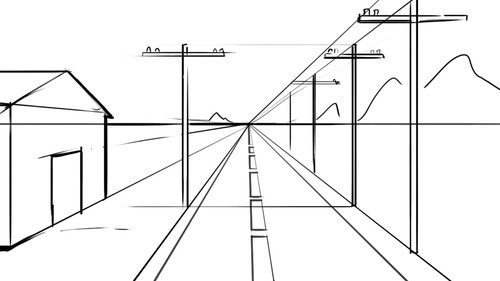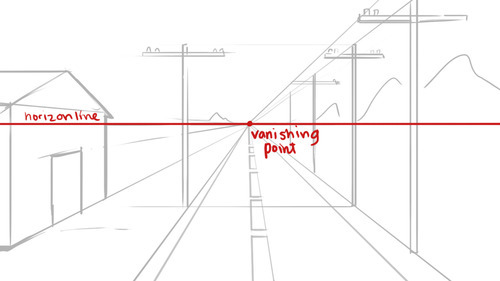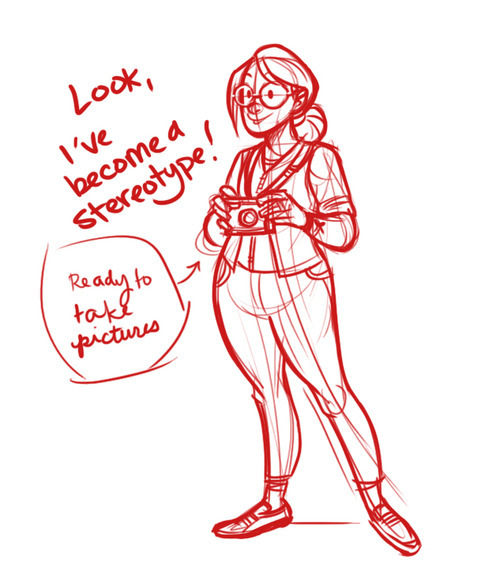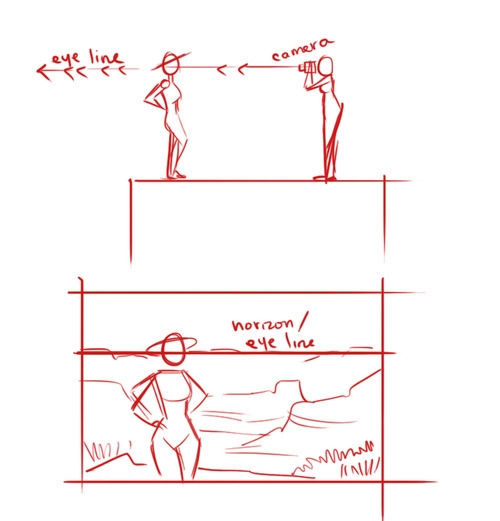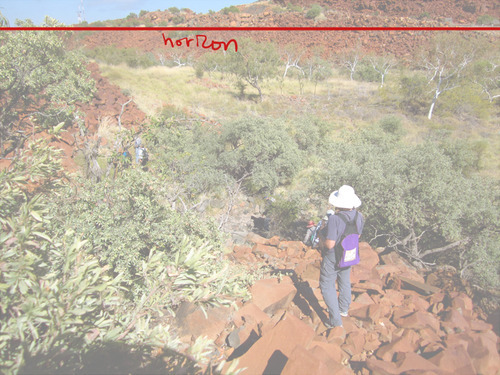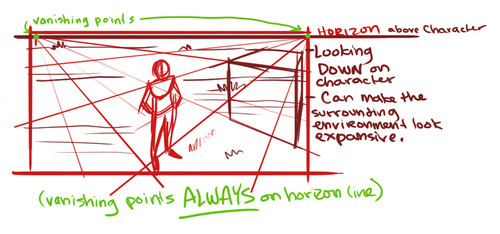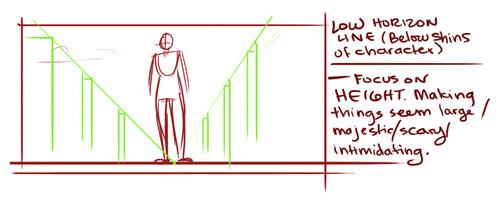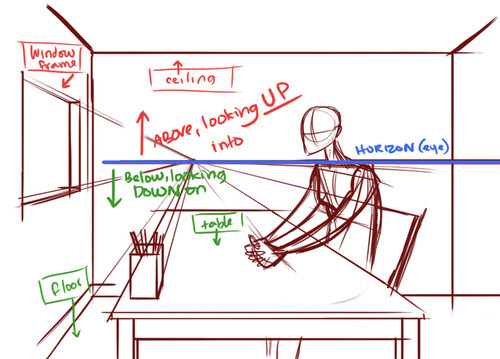Perspective: it’s one of those things that lots of us artists “know,” or at least it’s one of those things that we think we know, but when it comes to drawing things that aren’t “desert road stretching off into a horizon with nothing but electricity poles to the side of the road,” we get a little lost with what we’re supposed to do.
Environments and perspective may seem a bit scary at first, but once you understand the fundamentals of perspective, it’s not so much hard as it is just technical and a bit time consuming. I’ve gotten a few questions on perspective recently, so I thought it’d probably be a good idea to see if I can explain it.
WHAT YOU PROBABLY KNOW ABOUT PERSPECTIVE….
I am going through this tutorial thinking you already know the stripped down fundamentals of perspective. I remember learning the REALLY BASE BARE fundamentals of perspective in Elementary School. I don’t know how many of you had to do something like this:
When people teach perspective, they usually end up doing the “desert road” exercise, because most of us have seen something like this in real life: a road stretching off so far into the distance that it becomes a pinpoint.
This is good because it’s a real life example that introduces the two most important tools of perspective drawing to us: The Horizon Line, and the Vanishing Point.
We’re told that the horizon line represents the Horizon (where the ground meets the sky) and the vanishing point is where all parallel lines converge.
Okay that’s cool. Those are good things to know.
BUT those things aren’t usually explained when we learned them. Apart from “horizon is where the sky and the ground meet, vanishing point is where all the lines converge.” I think this is where perspective gets annoying or frustrating for a lot of beginning artists, because while they feel they understand vaguely what they’re SUPPOSED to do, it’s not explained really how they are supposed to do it.
For a really long time after I learned these fundamentals, the only “background” i was comfortable with drawing were LONG ROADS THAT STRETCHED OFF INTO THE DISTANCE.
We aren’t told how we’re supposed to translate this vanishing point and horizon line into other situations—hell, a lot of the time, we aren’t even told how we’re supposed to really apply these things, or how they translate into composition or real life. So I guess that’s what I’m going to try to do here.
In this first part, I am going to try to explain to you what the horizon line is, where you can put it, and how it affects the picture you are drawing.
SO WHAT IS THIS HORIZON LINE THING ANYWAY??
THE HORIZON LINE IS WHERE THE GROUND MEETS THE SKY, DUH.
Actually, let’s stop calling it the horizon line. It’ll probably be easier for you guys to get and to remember if we just call it the Eye Line.
The Horizon Line/Eye line is a horizontal line that represents your eye level.
Now what do I mean by that?
Okay, so…forget being a drawy-type artist for now, imagine you’re going to take video or photographs.
When you take photographs, the horizon line is going to be where your eye is.
Here, have an example with stuff I found on google images.
Here’s your basic photograph, straight on, the type you’d take just standing up.
I chose the grand canyon because it’ll make it very clear where the horizon is.
SO NOW HERE’S THE HORIZON LINE.
Now WHY is the horizon line here?
Because that is where your eyes are.
Have a diagram:
If you were standing in front of this woman, taking a picture of her, your eyes would be around where her face is (assuming you are about the same height as her). Thus, the horizon line runs through her face.
Let’s try another view…how about worm’s eye view?
As you can see, the horizon line is around the people’s feet.
Now what this means as the camera man is this:
AND OF COURSE A VIEW, LOOKING DOWN.
Camera:
So what does this have to do with drawing pictures?
Well, to be technical, to know where your vanishing point is (the point where all of those parallel lines converge) you need to know where your horizon line is, as the vanishing point will always be on the horizon line (3 point perspective excluded, but we’ll talk about that later).
But what I think is important is that when I draw pictures/illustrations, it helps to think of it as if you were filming/photographing the scene you are trying to draw. Thus translating the “where you would put your camera to take a picture of this scene” is really helpful in making an illustration.
The position of the horizon line also has an effect on how the scene is perceived.
What is also important in knowing these rules about the horizon and the camera is that YOU DON’T HAVE TO ACTUALLY SEE THE HORIZON TO KNOW WHERE IT IS. So you can do interiors and things!
Another point on the horizon being your eyeline, it also dictates what you see of the objects. Anything that is above your eyeline, you are looking UP into it. You see the bottom of it. Anything that is below your eyeline, you are looking DOWN on it. You end up seeing the top.
Example (with simple 1 point perspective, which I am sure all of you know how to use)
So hmmm…those are the basics of the horizon line that I can think of for now. I will get into vanishing points, and utilizing them in pictures (1,2,3 point perspective) next time! But it’s very important to know as much as you can about the horizon line first, because in the end it is very important in composing your picture.
If you have any questions for now, feel free to say, and I’ll try to answer them! See you next time. Thanks!

Just another WordPress site
